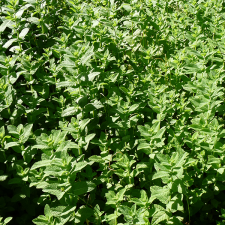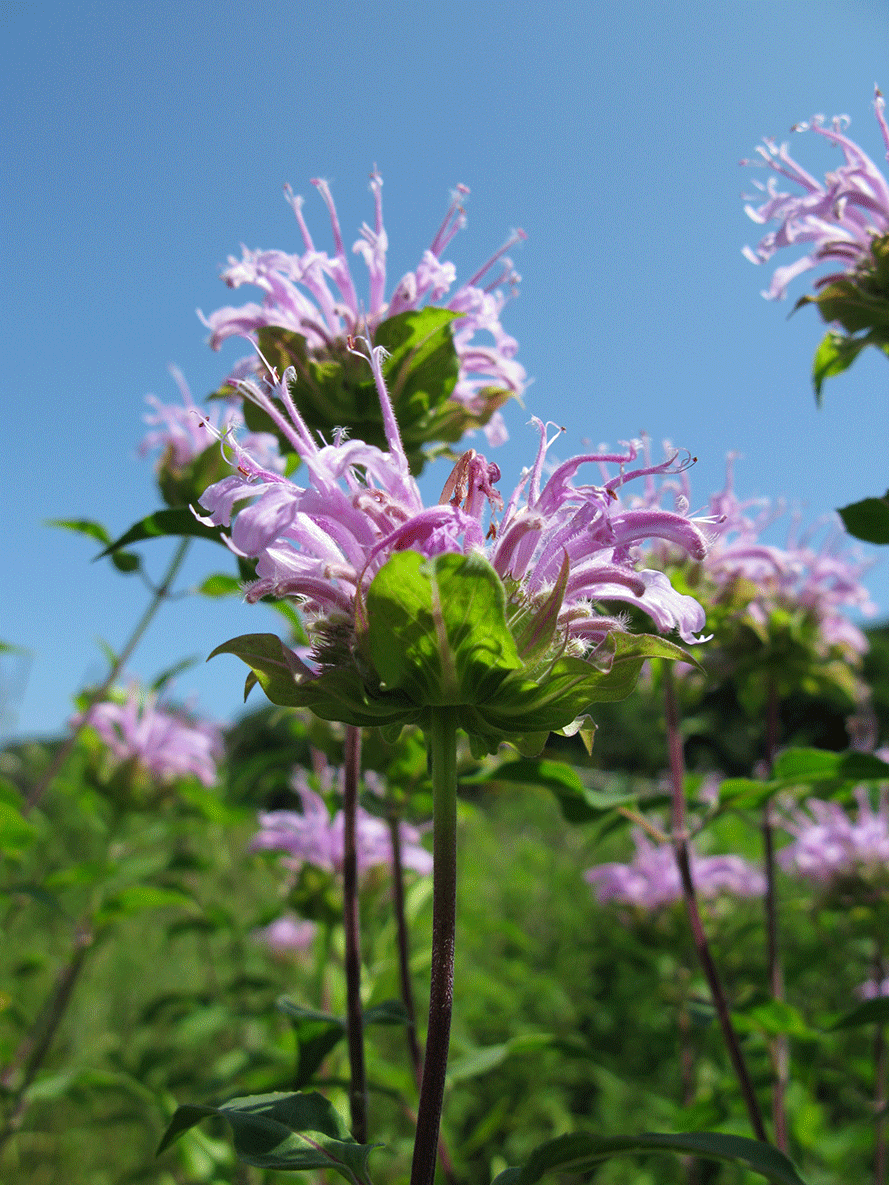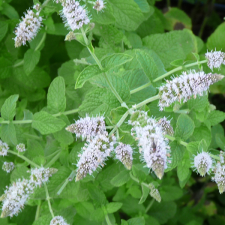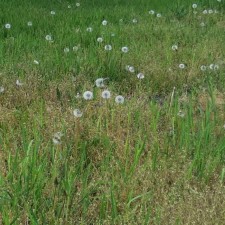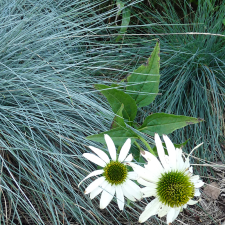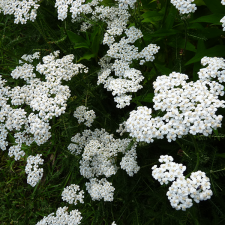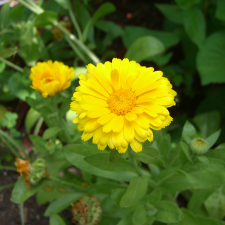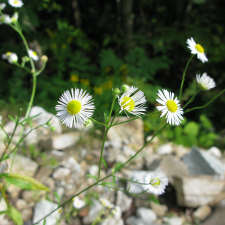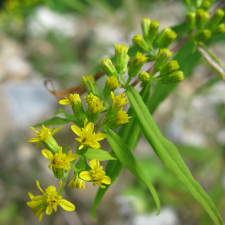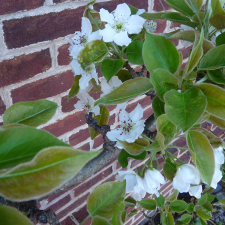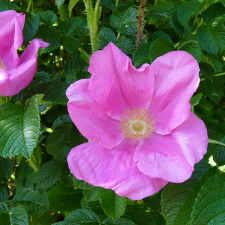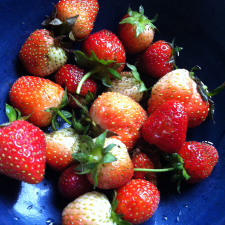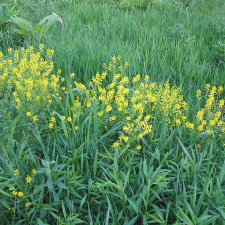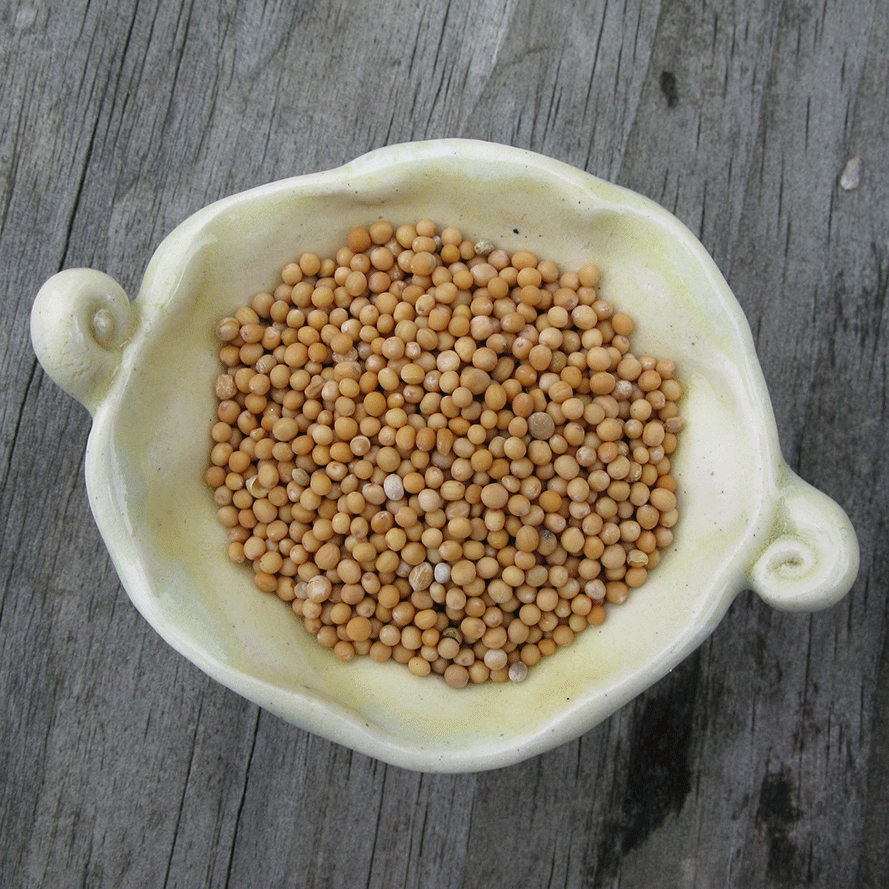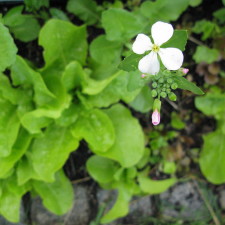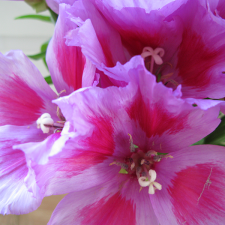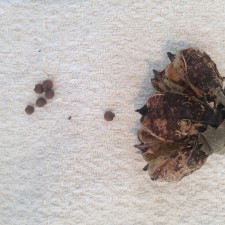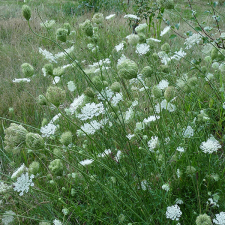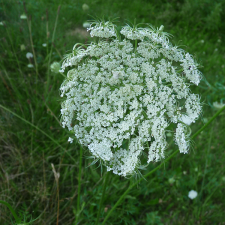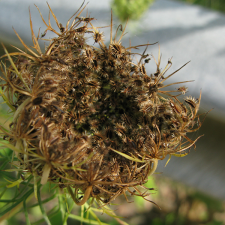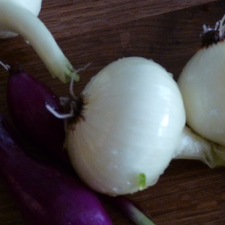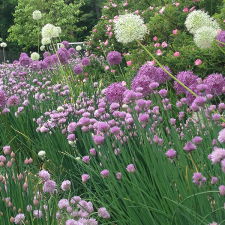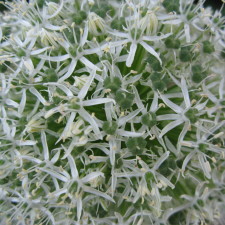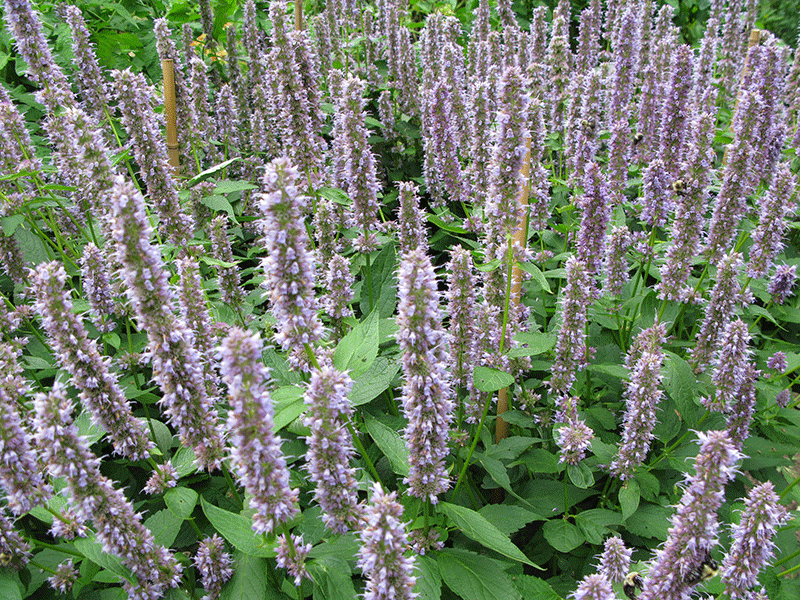Introduction to Common Plant Families for Herbalists
I gave a lecture to the Boston School of Herbal Studies Apprenticeship program yesterday on commonly used herbal plant families. We pulled apart, smelled, tasted, and inspected over 40 plant samples; reviewed identifying characteristics of each family; and discussed the major constituents and actions held by each family. Afterward, they requested a handout on the information – so I pulled together this post from my lecture notes. In developing the lecture, I relied heavily on Thomas J. Elpel’s work, books by Matthew Wood on herbal actions, and Lena Strew’s publication on identifying the 50 most common temperate-region plant families through Rutgers University.
I pulled this into a printable PDF for the class: Intro to Common Plant Families for Herbalists.
The Mint Family – Lamiaceae
Let’s start with one of the most important plant families on earth and the family that holds many many of our most used kitchen herbs – worldwide there are over 3500 species with approximately 50 genera found in North America. Very safe to sample, but some are poisonous if eaten en masse. If edible, all parts edible, and some species are a great source for edible flowers.
Patterns to Identify Members of the Mint Family:
- Square stem (roll between fingers) – some non-mints have square stems (in the Loosestrife, Verbena and Stinging Nettle families, but none of them smell minty), and not all mints have square stems (Thymus), but once you know those exceptions, this is a fairly good identifying characteristic of mints.
- Characteristic aroma – brings beneficial insects to the garden while repelling pests, an outlier Coleus does not have an aroma.
- Opposite leaves that alternate direction, leaves are pointed with edge serrations.
- Tubular, ‘irregular’ flowers bees love, with four stamens, with two long two short, a united corolla with two lobes up and three lobes down, clustered together in whorls, either in terminal spikes (spikes at the end of the stems) or in the leaf axils, but rarely both. Once the flowers have faded, the seed producing ovary is divided into four conspicuous nutlets.
- Volunteer readily and often grow wild.
Actions and Constituents of the Mint Family:
These are carminative nervines via gentle stimulation and a dispersing quality. Stimulation aids digestion and soothes stomachaches. Rich in volatile oils, especially menthol, which give the sensation of cooling – what is actually going on is a regulation of the movement of ions across cell membranes, changing the electrical charge in the neuron, which leads to the perception of cooling. The spicier oils are stimulating and truly warming, causing the body to open up and sweat; so most of these plants are diaphoretic. Volatile oils are also highly lethal to microorganisms (antimicrobial). Mints have antispasmodic action, which can relax blood vessels. The mint family is also high in minerals, especially calcium.
Common Plants of the Mint Family:
- Ajuga – Ajuga reptans
- All-Heal – Prunella vulgaris
- Anise Hyssop – Agastache foeniculum
- Basil – Ocimum basilicum
- Beebalm – Monarda spp. – Monarda fistulosa is for dry atrophy tissue state, stimulates gall bladder and lubricates colon
- Betony – Stachys officinalis
- Blue Vervain – Verbena hastata
- Catmint – Nepeta cataria
- Chasteberry – Vitex agnus-castus
- Chocolate mint – and all the hybridized mints – Mentha spp.
- Dead Nettle – Lamium
- Ground Ivy – Glechoma hederacea (Stephen Buhner cites this plant as able to remove heavy metals)
- Hemp Nettle – Galeopsis bifida (poisonous, from Europe, a weed in my garden)
- Horehound – Marrubium vulgare
- Lamb’s Ears – Stachys byzantina
- Lavender – Lavandula spp.
- Lemonbalm – Melissa officinalis (limonene – cooling essential oil for excited heat state) (also high in flavonoids)
- Marjoram –Origanum majorana
- Mountain Mints – Pycnanthemum spp.
- Oregano – Origanum vulgare
- Peppermint – Mentha peperita
- Rosemary – Rosmarinus officinalis (volatile or essential oil stimulant)
- Sage – Salvia spp.
- Scullcap – Scutellaria spp.
- Spearmint – Mentha spicata
- Thyme – Thymus vulgaris (volatile or essential oil stimulant)
The Aster Family – Asteraceae
Asters comprise the largest family of flowering plants other than Orchids, which are mostly tropical. There are over 2,500 species in the U.S. and Canada, many of which are cultivated as ornamentals, including marigold, chrysanthemum, calendula, and zinnia. Surprisingly few are cultivated as food plants other than lettuce, artichoke, endive, plus the seeds and oil of the sunflower.
Asteraceae is huge, and is divided into many subfamilies, which are then divided into tribes, including:
The Dandelion (Lactocoideae) subfamily includes a variety of plants with dandelion-like flowers. The ray flowers typically over-lap all the way to the center. The petals have strap-like, parallel edges with squared-off ends. The stems and leaves of all species have milky juice, and all are edible, but bitter. Bitter substances like dandelion greens are helpful as an appetizer to stimulate digestive secretions before the main meal. Eating your dandelions can help reduce problems with indigestion. Many other poisonous plants have milky juice and are not related to Dandelions, check the blossoms for proof.
The Aster subfamily is much larger, made up of eleven tribes, some of them radically different from the others. Thistles and knapweed (Centaurea) are found in the Artichoke tribe.
The Chamomile tribe includes the most aromatic members of the Aster family, such as yarrow, tansy, and chamomile. There is a common pattern to the smell that is undeniably sage-like.
The Sunflower tribe can be tested by smell as well: most species are resinous, much like pines, useful medicinally for their expectorant properties. Can learn to identify many new plants with just your nose.
Patterns to Identify Members of the Aster Family:
- Typical disk flower: a composite flower head of many flat petals arranged around a round center – which is itself a composite of many small flowers.
- Stigmas peeking above the disk center: those little curls hovering above in dandelions.
- Pappus hair: think of the fluff on a dandelion, the choke in an artichoke.
- Ovary below: thickened area below flowers.
- Multiple layers of bracts common: think of an artichoke.
- Each seed is produced by a single tiny flower: ‘petals’ are individual flowers.
- 5 stamens fused around pistil: this is minute, often hard to see the the naked eye.
- 5 petals fused together: again, very hard to see in many species.
Actions and Constituents of the Aster Family:
Bitter principles and tannins, resinous volatile oils in Aster and Sunflower tribes, Dandelion subfamily contains inulin and latex (white milky sap).
Perennial plants in this family store carbohydrates as polyfructanes, called inulin, instead of polysaccharides. Preparations of malted coffee substitutes from chicory roots are making use of inulin; some people have a gastrointestinal reaction to undercooked tubers of Jerusalem artichokes due to the inulin. The family also has sesquiterpene lactones which are responsible for the effects of feverfew and arnica and are being researched for their possible anti-cancer effects. Some people have contact allergies to the sesquiterpene lactones, yet they are also being researched for their potential for treatmetn of cardivascular disease and cancer. Chadwick et al in the International Journal of Molecular Science state, “Some sesquiterpenoid lactones are antimicrobial, disrupting the cell wall of fungi and invasive bacteria, whereas others protect the plant from environmental stresses that would otherwise cause oxidative damage. Many of the compounds are effective due to their bitter flavor.”
Common Plants in the Aster Family:
- Alpine Arnica – Arnica angustifolia
- Arnica – Arnica montana
- Artichoke – Cynara scolymus
- Asters – Aster spp.
- Bachelor’s Buttons – Centaurea cyanus
- Beggars Ticks – Bidens spp.
- Big Sagebrush – Artemisia tridentata (species have strong aromas and bitter tastes from terpenoids and sesquiterpene lactones, which discourage herbivory)
- Blackeyed Susan – Rudbeckia hirta
- Blanket flower – Gaillardia aristata
- Boneset – Eupatorium perfoliatum
- Bull thistle – Cirsium vulgare
- Calendula – Calendula officinalis (antiseptic)
- Chamomile – Matricaria maritima
- Cnicus – Cnicus benedictus
- Coltsfoot – Tussilago farfara (pyrrolizidine alkaloides)
- Common Chicory – Cichorium intybus
- Common Tansy – Tanacetum vulgare
- Dandelion – Taraxacum officinale
- Dotted Gayfeather – Liatris punctata
- Elecampane – Inula helenium (contain bitter terpenoids that are fragrant and are usually vermifuges/parasiticide)
- Fleabane – Erigeron spp.
- Golden Rod – Solidago spp.
- Joe-Pye Weed/Gravelroot – Eutrochium purpureum/maculatum
- Lettuce – Lactuca spp.
- Narrow-leaved Purple Coneflower – Echinacea angustifolia (antiseptic)
- Oxeye Daisy – Leucanthemum vulgare AKA Chrysanthemum leucanthemum
- Pearly Everlasting – Anaphalis margaritacea
- Purple Cone-flower – Echinacea purpurea (antiseptic)
- Pussytoes – Antennaria spp.
- Pyrethrum – Tanacetum cinerariifolium (insecticidal monoterpines called pyrethrins)
- Stevia – Stevia rebaudiana (diterpenes like glycoside steviosal – very sweet)
- Sweet Annie – Artemesia anuua (see note above and below)
- Wild Sunflower – Helianthus annuus
- Yarrow – Achillea millefolium (also high in flavonoids, used for excited heat like bleeding; cooling stimulant like lemon balm)
The Rose Family – Rosaceae
Another of the most important plant families we use for food. Many many of our most eaten fruits, including apples, peaches, raspberries, blackberries, almonds and cherries belong to this family. Rose family members produce prolific nectar and pollen for bees, and are hosts for butterflies and moths. Typically very safe, the seeds of some species have cyanide, which is poisonous (usually not ingested in high enough quantities to be fatal). Yet this family is soothing and cooling due to the cyanide, which cools by slowing down the Krebs cycle.
Patterns to Identify Members of the Rose Family:
- 5 sepals, 5 petals.
- Numerous stamens, numerous styles (distinctive, fuzzy-looking center).
- Serrated leaf, palmate leaf or one leaf consisting of several leaflets, leaves with stipules are common (sometimes similar-looking buttercups of Ranunculaceae do not have leaf stipules).
- Many different fruits – fleshy to false fruits – distinctive slightly domed receptacle underneath (inferior ovary).
Actions and Constituents of the Rose Family:
Cooling, soothing. Leaves are astringent (due to tannic acid) and cooling. Fruits are edible, laxative, antioxidant (flavonoids). All are supportive of the heart. Cyanogenic glycosides give rise to the bitter almond flavor. Flowers are edible. Triterpine saponins are other potentially toxic compounds in high concentrations in Agrimony and Tea roses can cause contact dermatitis.
Common Plants in the Rose Family:
- Blackberry – Rubus
- Cinquefoil – Potentilla spp.
- Firethorn – Pyracantha
- Geum – Geum spp.
- Hawthorne – Crataegus
- Juneberry – Amalanchier spp.
- Meadowsweet – Filipendula ulmaria
- Mountain Ash – Sorbus americana
- Ninebark – Physocarpus malvaceus
- Plums and Apricots – Prunus spp.
- Raspberry – Rubus idaeus
- Rose – Rosa spp., petals and hips
- Wild Strawberries – Fragaria vesca
(next four are called out by Matthew Wood as key aids for the excited heat state due to cyanide)
- Almond – Prunus (Prunus host many butterfly species)
- Apple – Malus spp.
- Peach – Prunus
- Wild Cherry – Prunus
The Mustard Family – Brassicaceae
Most members of the Mustard family are weedy species with short life cycles like the radish, sprouting quickly and growing fast. Look for them in disturbed soils such as a garden or construction site, where the ground is exposed to rapid drying by the sun and wind. They set seed early in the season before all moisture is lost from the ground.
Six of our common vegetables–cabbage, cauliflower, kohlrabi, Brussels sprouts, broccoli, and kale–were all bred from a single species of mustard, Brassica oleracea. Plant breeders developed the starch-storage abilities of different parts of the plant to come up with each unique vegetable. Commercial mustard is usually made from the seeds of the black mustard (B. nigra) mixed with vinegar.
Patterns to Identify Members of the Mustard Family:
- 4 petals (X or H) and 6 stamens, 4 tall and 2 short – this ‘cross’ gives these plants their other name, the Crucifers.
- Mustard flowers, then seed pods always occur on the plant in a radial pattern around the stalk, in a raceme.
- Seed pods split open from both sides to expose a clear membrane in the middle – ‘silique’.
- All are edible.
Actions and Constituents of the Mustard Family:
Crucifers are rich in glucosinolates, sulfur-containing compounds that impart a pungent aroma and spicy or bitter taste. Sulphuric compounds are antibiotic and antiviral and aid the body in detoxification. Researchers are looking into these compounds as cancer preventatives.
Common Plants in the Mustard Family:
- American Wintercress – Barbarea orthoceras
- Black Mustard Seed – Brassica nigra (rubefacient)
- Cabbages, Broccoli, radish, turnip
- Garlic Mustard – Alliaria petiolata
- Horseradish – Armoacia rusticana (bitter)
- Rock cress – Arabis spp.
- Sweet rocket – Hesperis matronalis
- Watercress – Nasturtium officinale
The Mallow Family – Malvaceae
Worldwide there are around 1500 species, with 27 genera in North America. Cotton is the only member of this family with poisonous properties. All others seem to be safe for edible and medicinal uses. The Marshmallow we use medicinally was originally derived from a type of hollyhock. Some other members of the family can be used as marshmallow substitutes.
Patterns to Identify Members of the Mallow Family:
- 5 separate petals and a column of stamens (multiple fused together)
- Bracts at base of petals
- Mucilage
- Pod-type seed head
Actions and Constituents of the Mallow Family:
Mallow family plants contain gums called mucilage, pectin, and asparagin, which gives them a slimy texture when crushed. The mucilaginous quality of the Mallows may be used just like the unrelated Aloe vera: externally as an emollient for soothing sunburns and other inflamed skin conditions, or internally as a demulcent or expectorant for soothing sore throats. Marshmellow is the top herb for the dry atrophy tissue state – coats and soothes mucosa, increasing mucus secretions.
Common Plants in the Mallow Family:
- Cotton – Gossypium hirsutum
- Hollyhocks – Alcea rosea
- Linden – Tilia spp. – if flowers are too old, can be narcotic. Gather when in bud. Cooling and moistening, hypotensive, relaxing nervine, relaxing diaphoretic, demulcent, astringent, anti-spasmodic, mild diuretic.
- Marshmellow – Althea (‘Althea’ means ‘healing’)
- Okra – Abelmoschus esculentus – the edible fruit of an Hibiscus
- Swamp Rose Mallow – Hibiscus moschuetos (Hibiscus are all high in flavonoids)
The Carrot/Parsley Family – Apiaceae
Characteristic umbel flower structure and often tap-rooted, this family is rich in essential oils and holds many culinary herbs, root crops, and medicinal plants. There are also many highly poisonous members in this family. (Toxicity, poison, or even venom must also be defined in terms of its dose.) Be careful to positively identify specimens before harvesting or preparing. Triterpene saponins occur in the Apiaceae: skin irritation and photosensitivity can occur from contact with Parsnip, Cow Parsnip, Chervil, Carrot and Queen Anne’s Lace. Furanocumarins can cause inflammation.
Patterns to Identify Members of the Carrot Family:
- Umbel flower structure
- Furrowed stem, hollow internodes
- Leaves sheathed at base, divided
Actions and Constituents of the Carrot Family:
The volatile oils in the carrot family are where most of the active constituents lie – actions include digestive and respiratory aid, antispasmodic, diuretic, stimulating and warming. Carrot family plants can be diaphoretic, antiviral, and antibacterial.
Parsley seed tea has been used for alcoholism, and Osha is used in Native American ceremony for clearing the mind. Related Gotu kola is also known for clearing the mind.
Common Plants in the Carrot Family:
- Angelica – Angelica archangelica
- Anise – Pimpinella anisum
- Caraway – Carum carvi
- Carrot – Daucus carota subsp. sativus
- Celery – Apium graveolens
- Coriander – Coriandrum sativum
- Cumin – Cuminum cyminum
- Dill – Anethum graveolens
- Fennel – Foeniculum vulgare
- Gotu kola – Centella asiatica
- Lovage – Levisticum officinale
- Osha – Ligusticum porter
- Parsley – Petroselinum crispum
- Poison Hemlock – Conium maculatum **highly poisonous**
- Queen Anne’s Lace – Daucus carota
- Sweet Cicely – Myrris odorata
The Nightshade Family – Solanaceae
Worldwide, there 2,300 species, including many of our favorite foods. Thirteen genera are native to North America. Potatoes, peppers, tomatillos, eggplant, petunias and tobacco are all in this family.
Patterns to Identify Members of the Nightshade Family:
- Colorless juice
- Alternate leaves
- Superior ovary in distinctive flower of 2 united carpels (and 2-chambered fruits)
Actions and Constituents of the Nightshade Family:
This family is full of alkaloids. The -oids are compounds that can be toxic in excess, as they don’t clear the system quickly. They cause hormones to cycle in the system for longer. Caffeine is an alkaloid that causes adrenaline to cycle freely and for longer. The Nightshade family has many species with alkaloids having narcotic effects: like tropane, nicotine, capsacin, and steroidals. These are used for their sedative and analgesic properties, depressing the central nervous system, and therefor numbing the body’s sense of pain. The alkaloid scopolamine is used for seasickness or vertigo, and atropine is a treatment for nerve gas attacks. This family also makes oxalic acid-forming structures shaped like sand in deadly nightshade and shaped like irregular crystals in Datura. Plants free of alkaloids are often our food plants.
Common Plants in the Nightshade Family:
The tomato is the genus Lycopersicon. Bell peppers, chili peppers, jalapeno peppers, paprika and tabasco all come from the Capsicum genus. Physalis is the tomatillo. Solanum includes the potato and eggplant. Belladonna is Atropa, while the petunia flower is from the genus Petunia. The genus Nicotiana gives us tobacco and the ornamental flower.
- Potato – Solanum tuberosum
- Deadly nightshade – Atropa belladonna
- Tomato – Solanum lycopersicum
- Jimson Weed – Datura stramonium (smoked)
The Onion Family – Alliaceae
This family was formerly known as the Lily family, or Liliaceae. It is composted of Monocots, and the tell-tale parallel-veination on leaf blades is present in all species. The Bunchflower subfamily with white flower bunches – has famous member Death Camas, deadly poison. Onions are prone to contamination by aflatoxin if not stored correctly; because of this, in the grocery trade, onions are often irradiated to inhibit sprouting. Irradiation can cause toxic effects in some people, and onions can trigger migraines.
Patterns to Identify Members of the Onion Family:
- Often with bulb at base, surrounded by dry leaves
- Onion-like smell
- Simple, narrow leaves in basal rosette
- Inflorescence a terminal umbel (rounded, globe-like), sometimes with bulblets
- Tepals 6, anthers 6
- Ovary superior, 3-carpellate
- Fruit a capsule
- Seeds hard, dark
Actions and Constituents of the Onion Family:
This is a hugely active group of plants. If you had to pick one medicine for the masses, the powerhouse antibiotic garlic may be the one to ward off epidemic flus and rampant viruses. Garlic improves the immune system, therefore slowing down active viruses. It also decreases blood sugar and lipid levels, prevents clots, lowers blood pressure, reduces inflammation, and improves asthma and allergies. Onions have been show to do the same; and are one of the only foods that contain prostaglandin. (Prostaglandins are important in endocrine regulation, as they are hormone-like lipids; also the sulphur smell of onions is a compound required for initiation of cell division).
Tamara J. Karr, phD, in her article An Onion by another name is a Lily says, “Vitamin C, fiber, biotin, folate, chromium, vitamin K, and thiamin are found in members of the onion family along with potent anti-cancer phytochemicals like quercetin, phenolic acid, sterols, pectin, volatile-oils, sulfur compounds and the enzyme alliinase. It is the enzyme release and it’s conversion to trans-S-cystine that stimulates crying by the cook.”
Onions are also digestive stimulants, diuretic, demulcent, and emollient. They contain inulin, volatile oils, and three important glycosides: sulfur, cardiac, and anthraquinon.
Common Plants in the Onion Family:
- Aloe – Agave spp.
- Camas Lily – Camassia quamash
- Canada Mayflower
- Chives – Allium schoenoprasum
- False Solomon’s Seal – Maianthemum racemosum
- Garlic – Allium sativum
- Lily-of-the-valley – Convallaria majus
- Ornamental and other onions, including Leeks – Allium spp.
- Sego Lily – Calochortus eurycarpus
- Solomon’s Seal – Polygonatum biflorum (this is now classified in the Family Asperigaceae, which formerly was a subfamily within Liliaceae, but you can see the similarities)
- Trillium – Trillium ovatum
- Troutlily – Erythronium americanum
- Yucca – Yucca filamentosa

